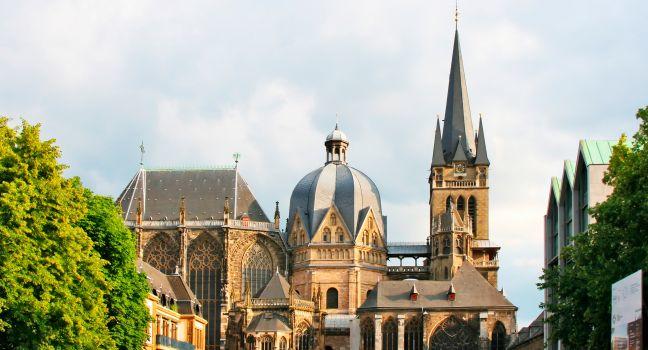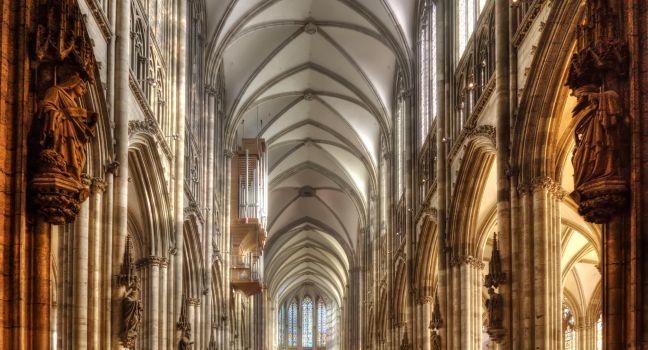Dom

Aachen's stunning cathedral, the "chapelle" of the town's earlier name of Aix-la-Chapelle, remains the single greatest storehouse of Carolingian architecture in Europe, and it was the first place in Germany to be named a UNESCO World Heritage site. Though it was built over the course of 1,000 years and reflects architectural styles from the Middle Ages to the 19th century, its commanding image remains the magnificent octagonal royal chapel, rising up two arched stories to end in the cap of the dome. It was this section, the heart of the church, that Charlemagne saw completed in AD 800. His bones now lie in the Gothic choir, in a golden shrine surrounded by wonderful carvings of saints. Another treasure is his marble throne. Charlemagne had to journey all the way to Rome for his coronation, but the next 32 Holy Roman emperors were crowned here in Aachen (with some exceptions), and each marked the occasion by presenting a lavish gift to the cathedral. In the 12th century Emperor Frederick I (aka Barbarossa) donated the great chandelier now hanging in the center of the Palatine chapel; his grandson, Friedrich II, donated Charlemagne's shrine. English-language guided tours of the cathedral are offered daily at 2.




